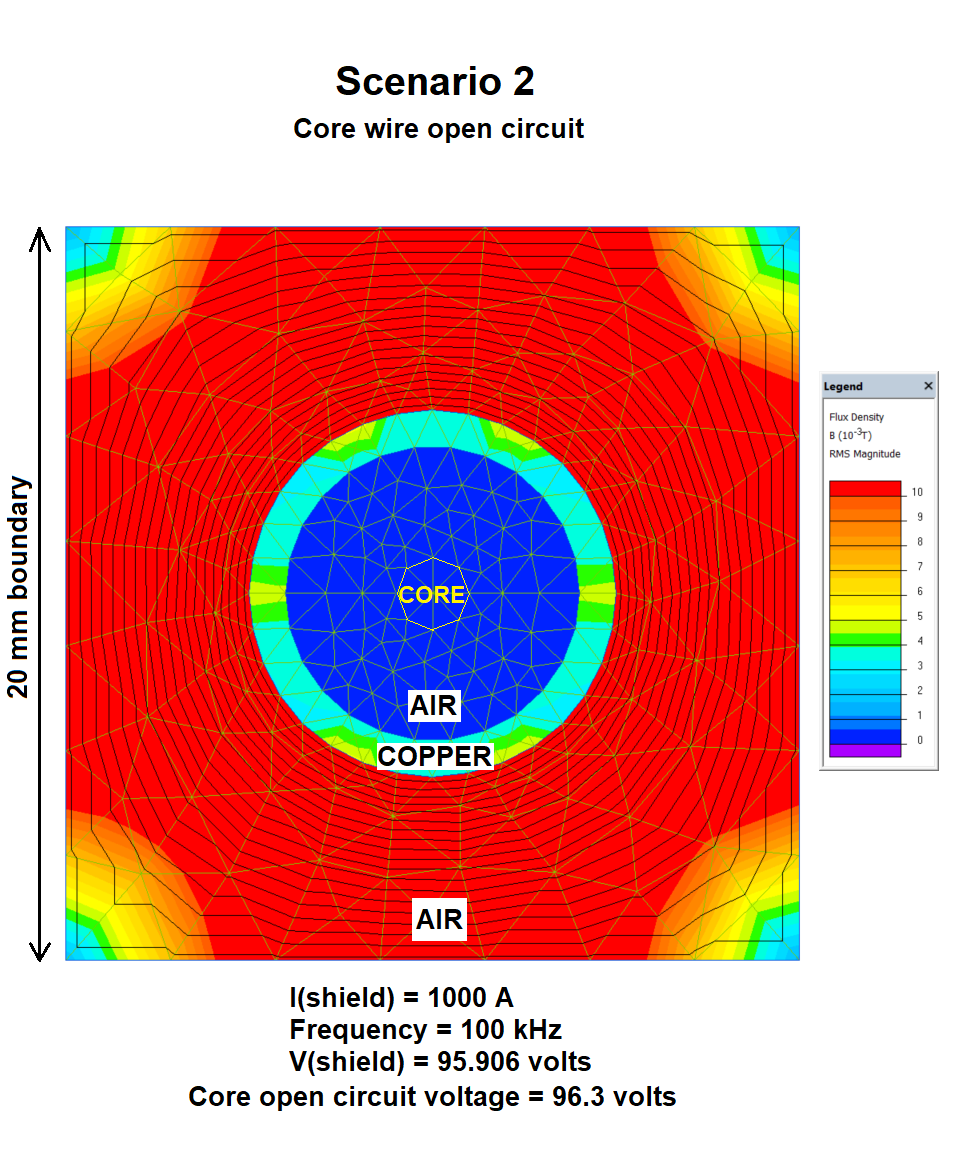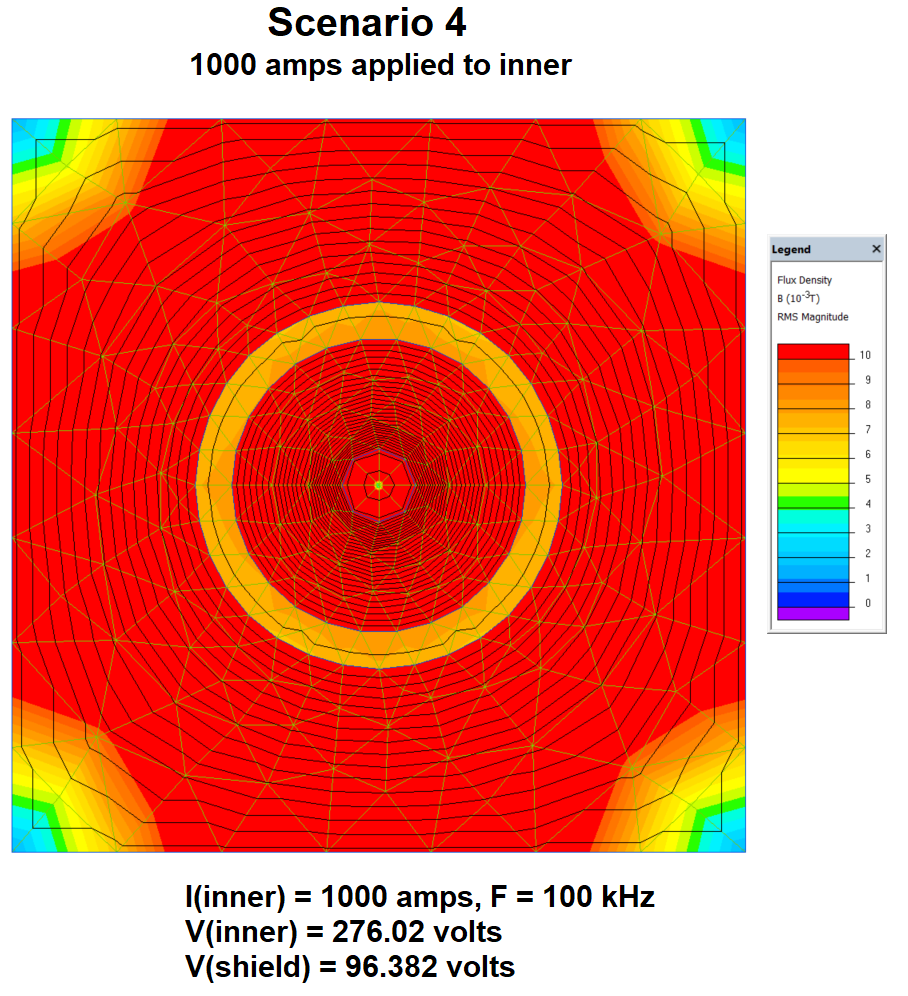Background to problem
Conventional wisdom informs that the magnetic flux density inside a tube carrying current is zero everywhere. Pictorially this is represented by this finite element analysis (courtesy of QuickField running an AC magnetics problem): -
I have the equivalent of a cable shield/screen at a radius of 4.5 mm and it's 1 mm thick copper. The QF simulation is setup to apply 1,000 amps through the copper shield and a frequency of 100 kHz. QF reports that the resulting shield voltage is 95.906 volts.
Adding a wire core at dead centre
Again, conventional wisdom informs that if the wire/core is open circuit i.e. has no voltage/current source applied, the flux density field pattern should look like the one above (and it does): -
However, there is one small "anomaly" and that is that QF reports that the core voltage is 96.3 volts. Given that there is (or appears to be) no coupling flux between the shield and the inner core, how can the inner core acquire this voltage?
Shorting the inner core (applying a 0 volt source)
Here's where I'm confused because, with the inner core shorted out, there is now a significant magnetic flux density inside the shield: -
Maybe the clue here is that in scenario 2, the terminal voltage on the core is 96.3 volts and somehow this voltage is acquired due to induction even though the flux density appears to be zero.
I also note that in scenario 3, the shield/tube voltage has dropped from 95.906 volts to 62.335 volts.
My main question
How does an inner conducting core inside a current tube acquire a voltage/potential along its length (scenario 2) in the apparent absence of any coupling flux?
Maybe I'm just not very good at using the simulator?




